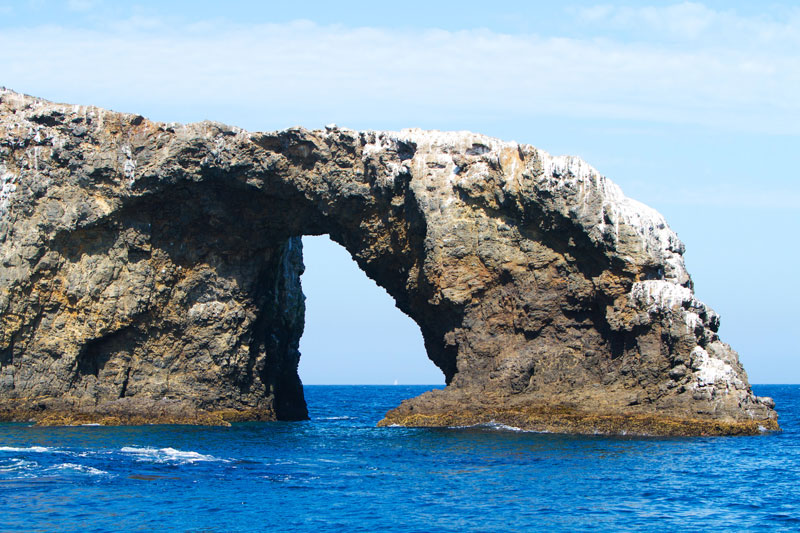Two of my South African brothers-in-law were visiting, so my then-husband decided to take them to Disneyland. I decided to ditch the boys and seize the opportunity to get a ride from the Bay Area to Ventura to spend the night on a dive boat that would visit two of the Channel Islands the next day. That evening, I shared a drink with some rowdy divers from Las Vegas, then slept in a sailor’s bunk, waking the next morning to a loud bell announcing breakfast.
I was excited. I’d never been on a liveaboard before. The dive stations were spacious, and the crew graciously set up all of our tanks. I sat grinning in the gorgeous, warm California morning sun as we made our way out to Anacapa Island.
Story by Brianna Politzer Stevens
As I expected, the crew paired me up with another diver who had come alone. My buddy, “Neal,” I’ll call him, was a relatively new diver with about 20 dives under his belt. He told me he was a bit nervous at the prospect of diving in the open Pacific. The currents frightened him. So did the temperature (about 65 degrees Fahrenheit). I told him that I was a dive master and that I would stick by him. If only I had understood the ramifications of that promise!

The natural arch bridge at Anacapa island.
The dive was relatively uneventful. Not surprisingly, my buddy ran low on air pretty quickly, unaccustomed as he was to the conditions. That was when the whole dive plan went off the rails. Instead of swimming back to the anchor line to ascend as we had planned, Einstein, as I’ll call him now, decided to do a free-floating safety stop. I motioned frantically for him to follow me back to the anchor line. He ignored me. I saw where this situation was going—straight out to sea.
We surfaced about a quarter-mile down current from the boat and inflated our BCDs. I turned to look at Neal, whose face had contracted into a white mask of panic. He was exhausted. He could see how far away the boat was. He realized (correctly), that there was no way the crew could see our black-hooded heads bobbing in the waves.
“Listen,” I said. “We’re going to be fine. I’m going to tow you to the boat. I just need you to just relax, float on your back, and let me bring you in.” He didn’t respond. Every second we hesitated would mean being washed further away from the boat. So, instead of further cajoling, I grabbed Neal’s tank valve and started dragging him back to the boat. Still panicked, he thrashed wildly, which–combined with the strong current–made my job very difficult.
Finally, we got close enough to the boat for the crew to throw Neal a line. They pulled him to the stern and helped him back on board. I swam back, spent, grumpy, and put out by the whole incident. After all, I was off the clock. I hadn’t signed up for rescuing anyone that day!
The takeaway here is that diving with a buddy you don’t know is a very real risk. You won’t know how they will react in an emergency. You won’t be aware of their physical limitations, their habits, their fears, or their preferences. It is hard to “read” a stranger.
I am not suggesting that you should never dive with a buddy you have just become acquainted with. However, I will say that you should not just accept your “assignment” blindly. Take a few minutes to talk to your prospective buddy. Make sure that your experience levels are matched in a way that works for you both. If you are a veteran diver accompanying a newbie, don’t get too adventurous or go too far from the beach or the boat. Your novice buddy may run out of air long before you do.
Next, always follow the diving dictum “plan your dive and dive your plan.” Discuss your intended depth. Go over hand signals and their meanings. (Different regions use different signals, so do not assume that you have a common “lexicon.”) Decide when you’ll ascend. (After a specific amount of time? When one partner gets to a certain air level?) Confirm where, when, and how you’ll make your safety stop.
Most importantly, trust your instincts. If your gut tells you that you are ill-matched or that your prospective buddy might be a danger to you, politely approach a member of the crew and express your concerns. Allow the crew to diffuse the situation and make the accommodation. After all, you’re a paying customer. It is okay to ask for this level of service.
Above all . . . be safe, and enjoy!
.
